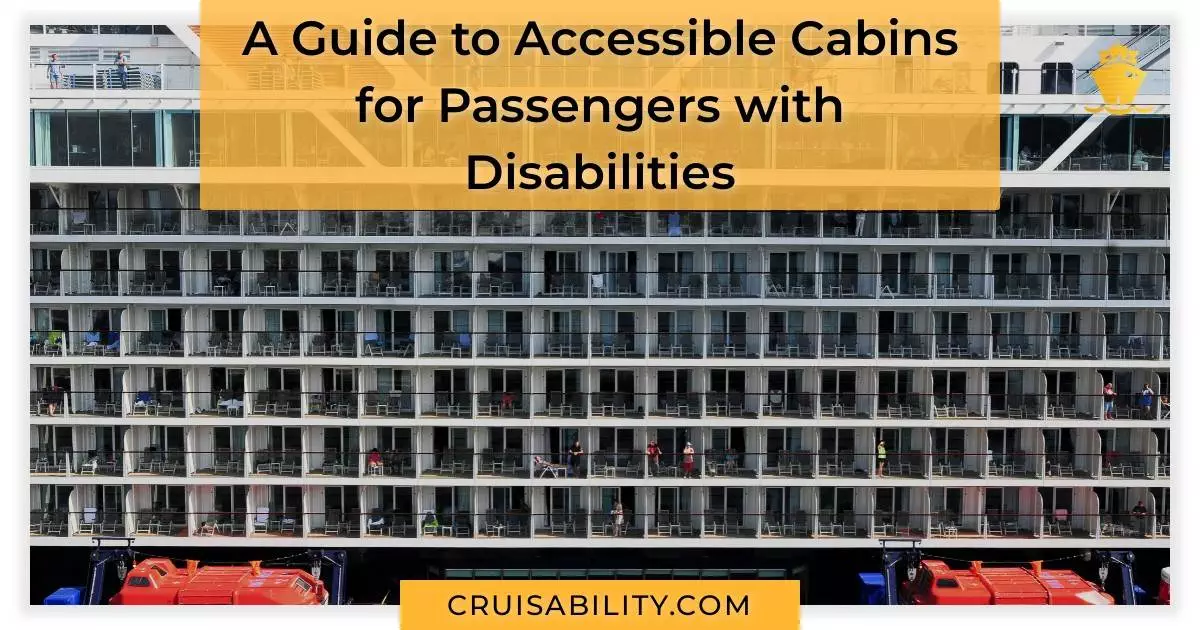Traveling can be difficult for people with disabilities, but with accessible cabins, it doesn’t have to be. Cruise ship cabins are available for disabled passengers with a variety of mobility issues, and these cabins are designed to make it easier for them to enjoy their vacation. In this guide, we will provide you with all the information you need to know about accessible cabins. We will discuss different types of cabins available for passengers with disabilities, features of accessible cabins, booking accessible cabins, tips for a comfortable stay, and more.
Understanding Cabin Categories
Before booking an accessible cabin, it is important to understand the different types of cabins available. Cruise ships have several types of cabins, including inside cabins, outside cabins, balcony cabins, and suites. Inside cabins are located in the interior of the ship, while outside cabins have a window or porthole. Balcony cabins have a private balcony, and suites have a separate living area.
Types of Cabins Available for Passengers with Disabilities
Wheelchair-accessible cabins are an important option for disabled passengers. These cabins are designed to provide extra space and features that make it easier for passengers with physical disabilities to move around the room. Some of these features include:
- Widened doorways
- No entry thresholds
- Lowered closet rods, desks, and dressers
- Accessible thermostats and light switches
Features of Accessible Cabins
Accessible cabins have several features that make them more comfortable for disabled passengers. These features include:
Widened Doorways and No Entry Thresholds
Accessible cabins have wider doorways with no entry thresholds, making it easier for passengers to enter and exit the room. This is especially important for passengers who use wheelchairs or walkers.
Accessible Bathrooms with Roll-In Showers
Accessible cabins have bathrooms with roll-in showers, grab bars, and handheld showerheads. These features make it easier for passengers with mobility issues to use the bathroom without assistance.
Visual and Auditory Alarms
Accessible cabins have visual and auditory alarms to alert passengers with hearing or visual impairments in case of an emergency.
Lowered Closet Rods, Desks, and Dressers
Accessible cabins have lowered closet rods, desks, and dressers, making it easier for passengers with mobility issues to access their belongings.
Accessible Thermostats and Light Switches
Accessible cabins have thermostats and light switches that are within reach of wheelchair users.
ALSO READ
Booking Accessible Cabins
When booking an accessible cabin, it is important to know how to request one and understand the important considerations.
How to Request an Accessible Cabin
When booking a cruise, passengers should inform the cruise line about their accessibility needs and request an accessible cabin. It is important to request a cabin that meets the specific needs of the passenger, such as a cabin with a roll-in shower.
Important Considerations while Booking
When booking an accessible cabin, passengers should consider the location of the cabin and the amenities offered on the ship. It is important to choose a cabin that is close to the elevators and other facilities that the passenger will need.
Tips for a Comfortable Stay
Here are some tips to help disabled passengers have a comfortable and enjoyable vacation:
Bringing Essential Medical Equipment
Passengers should bring any essential medical equipment with them, such as a portable oxygen concentrator or a mobility scooter. They should also bring enough medication to last the duration of the cruise.
Informing the Cruise Line about Special Dietary Needs
Passengers should inform the cruise line about any special dietary needs they have, such as a gluten-free or vegetarian diet. The cruise line can accommodate these needs if they are informed in advance.
Making Use of On-Board Services
Disabled passengers should take advantage of the on-board services offered by the cruise line, such as accessible shore excursions and wheelchair rentals.
ALSO READ
Conclusion
Accessible cabins make it possible for disabled passengers to enjoy a cruise vacation. By understanding the different types of cabins available, the features of accessible cabins, and how to book them, disabled passengers can have a comfortable and enjoyable trip.
RELATED ARTICLES:

